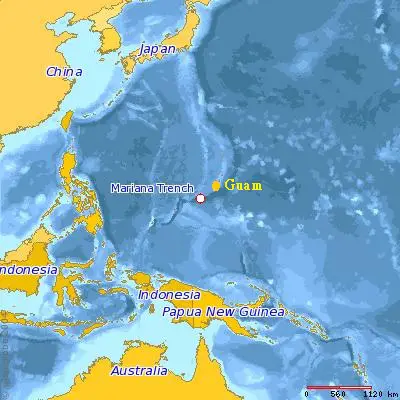Following an investigation by Oceana, the South Pacific Regional Fisheries Management Organization (SPRFMO) decided to keep the fish factory vessel Damanzaihao (now named Vladivostok 2000) on its list of illegal, unreported and unregulated (IUU) fishing vessels, and issued warnings to China, Panama and Cook Islands for providing assistance to the vessel. The SPRFMO’s Compliance and Technical Committee found that these three countries were not in compliance with conservation and management measures to combat IUU fishing and issued them a “priority non-compliance” status, which reflects violations to SPRFMO regulations.
“Oceana applauds SPRFMO’s decision and views this as an important example of how transparency at sea can help enforce rules that combat IUU fishing,” said Beth Lowell, deputy vice president of U.S. campaigns at Oceana. “With the help of technology, we can see what vessels are doing beyond the horizon and take steps–like Oceana did–to hold the responsible parties accountable.”
Oceana investigated the Damanzaihao’s movements using Global Fishing Watch’s mapping platform, which harnesses cutting-edge technology to empower anyone to investigate global fishing* activity in near real-time, for free.
“If we didn’t have Global Fishing Watch’s technology, we wouldn’t have been able to track this vessel and share this information, and it would have continued operating,” explained Liesbeth van der Meer, executive director of Oceana Chile. “This would have been a huge risk to marine ecosystems not only because of the vessel’s huge capacity but also because of its track record of being on the SPRFMO IUU List and changing names and flags.”
The Vladivostok 2000 (formerly named Damanzaihao), currently flagged to Moldova, is one of the world’s largest vessels with a history of changing names and reflagging to different countries. Originally designed as an oil tanker measuring 228 meters, the vessel was rebuilt to function as a one-stop-shop fish processor, with the ability to store, freeze, process and transfer fish. According to a New York Times article, the vessel (named Lafayette and flying a Russian flag when the article was published in 2012) can process up to 547,000 metric tons of fish each year “if it operated every day.”
Timeline of Likely Vessel Activities Based on Oceana’s Review of Global Fishing Watch Data and SPRFMO Sources
- February 6, 2015: Damanzaihao is listed on the SPRFMO IUU List.
- July 6, 2018: Using the Global Fishing Watch platform, Oceana tracked the Damanzaihao leaving Peruvian waters and likely meeting with Cook Islands oil tanker ship Hai Soon 26 on the high seas. According to the SPRFMO meeting report, the two vessels “engaged in transfer activities” as the Damanzaihao was “without adequate fuel.” Also in the report, members noted that this refueling involved “a clear breach” of SPRFMO’s Conservation and Management Measures.
- SPRFMO regulations say that member country vessels should not assist in any way vessels on its IUU List
- July 13, 2018: Based on Oceana’s analysis using the Global Fishing Watch platform, the Damanzaihao entered Panama’s exclusive economic zone, where it remained for three days and according to the SPRFMO meeting report, “received port services in Balboa, Panama.” According to Panama’s comments cited in the report, “a private company working inside the harbor refueled the vessel without authorization by the Port Authorities…”
- SPRFMO regulations say that members and cooperating parties such as Panama should prohibit the entry of vessels on the IUU List into their ports and their vessels should not assist in any way
- September 12, 2018: Based on Oceana’s information obtained from the Global Fishing Watch platform, Damanzaihao arrived at Port of Dalian in China, and SPRFMO’s meeting report similarly noted that this vessel traveled to Dalian, China.
- SPRFMO regulations say that members should prohibit the entry of vessels on the IUU List into their ports
- December 2018: Oceana Chile sent information showing potentially suspicious activities surrounding the Damanzaihao to the SPRFMO.
- January 19-21, 2019: SPRFMO’s 6th Compliance and Technical Committee Meeting was held in The Hague, where the SPRFMO reviewed all information surrounding the Damanzaihao. The SPRFMO decided to keep the fish factory vessel Damanzaihao (now named Vladivostok 2000) on its IUU List.
- SPRFMO also found that China, Panama and Cook Islands were not in compliance with conservation and management measures to combat IUU fishing and issued them a “priority non-compliance” status, which reflects violations to SPRFMO regulations.
*Any and all references to “fishing” should be understood in the context of Global Fishing Watch’s fishing detection algorithm, which is a best effort to determine “apparent fishing effort” based on vessel speed and direction data from the Automatic Identification System (AIS) collected via satellites and terrestrial receivers. As AIS data varies in completeness, accuracy and quality, it is possible that some fishing effort is not identified and conversely, that some fishing effort identified is not fishing. For these reasons, Global Fishing Watch qualifies all designations of vessel fishing effort, including synonyms of the term “fishing effort,” such as “fishing” or “fishing activity,” as “apparent,” rather than certain. Any/all Global Fishing Watch information about “apparent fishing effort” should be considered an estimate and must be relied upon solely at your own risk. Global Fishing Watch is taking steps to make sure fishing effort designations are as accurate as possible.
Press Releases: usa.oceana.org
Photo Courtesy: wikimedia.org
The post Oceana Investigation Keeps One Of The World’s Largest Fish Factory Vessels On Illegal Fishing List appeared first on Maritime Manual.
from WordPress http://bit.ly/2DbQJi7

No comments:
Post a Comment